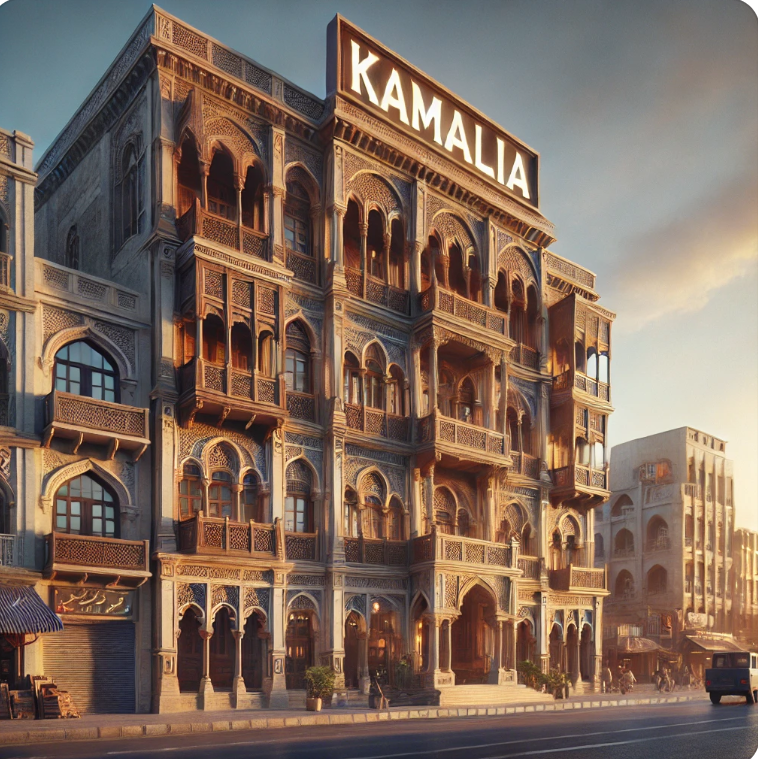Kamalia Tehsil and its principal city, Kamalia, are integral parts of the Toba Tek Singh District in Punjab, Pakistan. This region is renowned for its rich history, cultural significance, and economic contributions, particularly in textiles and agriculture. On July 1, 1982, it was elevated to the status of a tehsil and incorporated into the newly established Toba Tek Singh District.
The administrative framework was further refined with the introduction of the Punjab Local Government Ordinance in 2001, leading to the formation of the Tehsil Municipal Administration (TMA) Kamalia on August 12, 2001. The TMA oversees municipal services, infrastructure development, and community welfare programs.
Kamlia – Historical Background:
The origins of Kamalia trace back to ancient times, with some accounts suggesting its existence prior to Alexander the Great’s invasion in 325 BC. Historically, the area was known as “Kot Kamal,” named after Kamal Khan Kharal, a prominent leader of the Kharal tribe. Over time, the name evolved to Kamalia. The city has witnessed various phases of development, especially during the British colonial period when it became part of the Montgomery District (now Sahiwal).

Geographical Location & Agricultural Significance:
Situated approximately 240 kilometers from Lahore and 32 kilometers from Toba Tek Singh, this city is strategically positioned on the right bank of the Ravi River. It is bordered by Chichawatni to the south, Pir Mahal to the west, Rajana and Mamu Kanjan to the north, and Harappa and Sahiwal to the east. The region’s flat and fertile terrain makes it ideal for agriculture, contributing significantly to Punjab’s agrarian economy.
Population of Kamalia:
According to 2023 cenus, population of Kamalia Tehsil is 422,477 and average household size is 6.2. As of the 2017 census, it had a population of 371,851, with 135,641 residents in urban areas and 236,210 in rural regions. The city of Kamalia itself ranks as the 42nd most populous city in Pakistan, surpassing neighboring towns like Rajana, Chichawatni, and Pir Mahal in population size.
Kamalia Khaddar and Economic Activity:
Kamalia’s economy thrives on agriculture and textile production. The fertile lands yield abundant crops, including wheat, sugarcane, rice, and cotton. Kamalia Khaddar is a renowned handwoven and machine-woven fabric that has earned the city the title “City of Khaddar” in Pakistan. This traditional textile is celebrated for its durability, warmth, and comfort, making it a preferred choice for clothing, especially during winter. The craft of Khaddar weaving in this area dates back centuries, with local artisans passing down their skills through generations. The fabric is made from high-quality cotton, carefully spun and woven to create a dense yet breathable texture.
This cloth is highly valued for its unique blend of softness and resilience. It is often used for making shalwar kameez, shawls, and bedsheets, with designs ranging from simple, plain weaves to intricate patterns. The introduction of modern weaving techniques has enhanced production while maintaining the authenticity of the fabric. Local markets in this town are filled with a variety of Khaddar products, attracting buyers from across Pakistan.
The industry also plays a crucial role in the local economy, providing employment to thousands of weavers, dyers, and traders. Despite technological advancements, Kamalia Khaddar remains a symbol of Pakistan’s rich textile heritage, blending tradition with contemporary fashion trends.
Additionally, the region is recognized for its handmade carpets and a robust poultry farming industry, which ranks second in Punjab.
Cultural and Historical Significance of Kamalia:
Kamalia boasts a rich cultural heritage with several historical landmarks. The city is home to an ancient mosque from the Jahangir era, reflecting Mughal architectural influences. Additionally, the shrines of Hazrat Baba Fazil Dewan and Dargahi Shah serve as spiritual centers, attracting devotees and tourists alike. The remnants of old havelis, a Sikh temple, and a Hindu cremation site (Shamshan Ghat) further underscore the city’s diverse historical tapestry.
Educational Institutions:
Education holds a pivotal role in this city’s community development. The city houses several notable institutions, including:
- Government Postgraduate College: Located on Chichawatni Road, this college offers a range of undergraduate and postgraduate programs, catering to the higher education needs of the region.
- Government College for Women: Situated in Iqbal Bazar, this institution focuses on women’s education, empowering them with academic and professional skills.
- Government Technical College of Commerce: This college provides specialized training in commerce and technical fields, equipping students with practical skills for the job market.
Healthcare Facilities in Kamalia:
Kamalia is equipped with various healthcare services to address the medical needs of its residents. The Tehsil Headquarters (THQ) Hospital on Chichawatni Road serves as the primary medical facility, offering a range of health services. Additionally, the Family Health Clinic and Family Health Mobile Unit operate from the THQ Hospital premises, providing specialized care. Several Family Welfare Centers are also established in nearby areas, ensuring accessible healthcare for both urban and rural populations.
Infrastructure and Development:
The city’s infrastructure has seen considerable growth, with ongoing projects aimed at enhancing connectivity and urban amenities. The under-construction M-4 motorway is poised to link Kamalia with cities like Gojra, Toba Tek Singh, and Shorkot, promising improved transportation and economic opportunities. The Tehsil Municipal Administration actively engages in urban planning, focusing on sustainable development and efficient service delivery to meet the evolving needs of the populace.
Conclusion:
Kamalia Tehsil and its city stand as exemplars of historical richness, cultural diversity, and economic vitality in Punjab, Pakistan. From its ancient roots to its modern advancements, this city continues to contribute significantly to the region’s socio-economic landscape, preserving its heritage while embracing progress.
